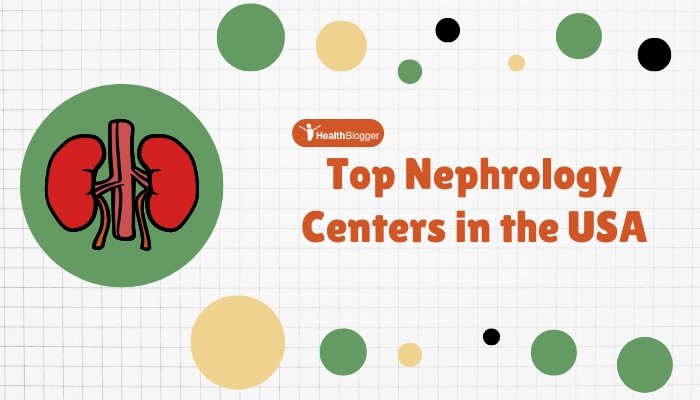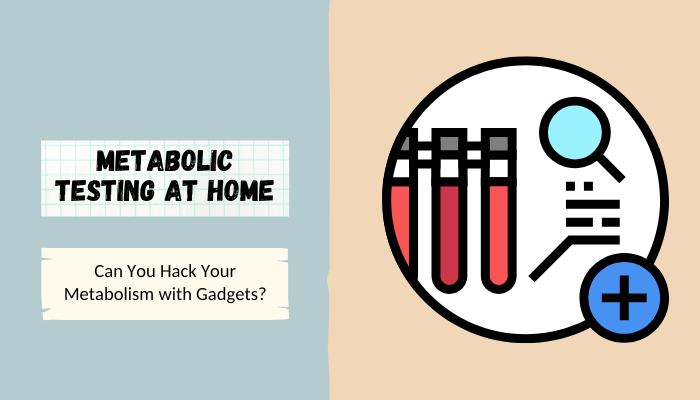Below is a representative (not exhaustive) list of doctors and medical researchers of French birth or heritage who have had a significant presence or affiliation in the United States.
Some were pioneering scientists with medical degrees, some won Nobel Prizes, and others served in leadership roles at U.S. institutions.

This collection of twenty-plus profiles spans multiple time periods, specialties, and career paths, illustrating the broad influence of French-origin physicians on American medicine. It is neither an official ranking nor a definitive catalog.
Introduction
French-born physicians and researchers have played significant roles in American healthcare, from foundational discoveries in immunology and infectious diseases to landmark achievements in surgery and advanced therapeutics. Many relocated during times of war or economic opportunity, while others accepted positions at leading U.S. universities or institutes, forging international collaborations that continue to benefit patients globally. This list showcases some of the most recognized names, though countless other French-origin doctors have also contributed.
Profiles of Twenty-Plus French-Origin Doctors in the USA
Dr. Alexis Carrel (1873–1944)
- Specialty: Vascular Surgery, Transplantation Research.
- US Affiliation: Rockefeller Institute for Medical Research (New York).
- Major Achievements:
- Nobel Prize in Physiology or Medicine (1912) for pioneering vascular suture techniques.
- Developed methods for preserving organs outside the body, foundational to organ transplantation research.
- Significance:
Born in Lyon, France, Carrel became one of the early innovators in surgical methods that permitted future organ transplants. His work shaped modern vascular and transplant surgery worldwide.
Dr. André Frédéric Cournand (1895–1988)
- Specialty: Pulmonary Medicine, Cardiology.
- US Affiliation: Bellevue Hospital and Columbia University.
- Major Achievements:
- Co-recipient of the 1956 Nobel Prize in Physiology or Medicine for developing cardiac catheterization techniques (shared with Werner Forssmann and Dickinson Richards).
- Advanced understanding of heart and lung physiology.
- Significance:
Born in Paris, Dr. Cournand’s innovations in catheter-based diagnostics revolutionized cardiopulmonary medicine, allowing precise measurements of cardiac function and leading to safer heart procedures.
Dr. Luc Montagnier (1932–2022)
- Specialty: Virology.
- US Collaborations: Various research partnerships, guest lectures in American institutions.
- Major Achievements:
- Nobel Prize (2008) for co-discovering HIV at the Pasteur Institute in Paris.
- Investigated viral oncogenesis and later controversial theories on electromagnetic waves in DNA.
- Significance:
Although primarily based in France, Montagnier lectured in the U.S. and collaborated with American labs on HIV/AIDS research. His discovery of HIV spurred life-saving antiretroviral therapies, heavily influencing U.S. and global public health.
Dr. Françoise Barré-Sinoussi (1947– )
- Specialty: Virology, HIV/AIDS Research.
- US Connections: Collaborative projects with NIH and American HIV specialists.
- Major Achievements:
- Shared the 2008 Nobel Prize with Luc Montagnier for HIV discovery.
- Continues advocacy for global HIV prevention, championing open scientific exchange.
- Significance:
Dr. Barré-Sinoussi’s work resonated worldwide, including the U.S., shaping how researchers approach retroviruses and forging ties with American institutions seeking HIV/AIDS cures or vaccines.
Dr. Jean Dausset (1916–2009)
- Specialty: Immunology, Transplant Compatibility.
- US Influence: Collaborations with American transplant researchers.
- Major Achievements:
- Nobel Prize in Physiology or Medicine (1980) for discovering the human leukocyte antigen (HLA) system.
- Enabled better tissue matching for organ transplantation.
- Significance:
Although he conducted most work in France, Dausset’s HLA breakthroughs were fundamental to U.S. transplant medicine. American transplant centers applied HLA typing to reduce graft rejection.
Dr. Roger Guillemin (1924– )
- Specialty: Endocrinology, Neurohormones.
- US Affiliation: The Salk Institute for Biological Studies (California).
- Major Achievements:
- Nobel Prize (1977) for discoveries concerning peptide hormone production in the brain.
- Elucidated hypothalamic regulatory hormones, including TRH and somatostatin.
- Significance:
Born in Dijon, France, Guillemin eventually moved to the U.S. and revolutionized neuroendocrinology. His findings underlie the physiology of hormonal feedback mechanisms taught in American medical curricula.
Dr. Claude Lenfant (1923–2015)
- Specialty: Physiology, Public Health.
- US Affiliation: Director of the National Heart, Lung, and Blood Institute (NHLBI) at NIH (1982–1994).
- Major Achievements:
- Championed large-scale trials to reduce heart disease, stroke, and lung disease.
- Strengthened guidelines for hypertension and hyperlipidemia management.
- Significance:
A French-born physiologist, Lenfant guided major NIH initiatives that shaped American cardiovascular risk reduction campaigns, establishing lifestyle and pharmacologic interventions widely adopted in primary care.
Dr. Georges Mathé (1922–2010)
- Specialty: Oncology, Immunology.
- US Ties: Collaborations with American cancer centers; influenced early bone marrow transplant research.
- Major Achievements:
- Performed some of the first bone marrow transplants in leukemia patients.
- Investigated adoptive immunotherapy strategies.
- Significance:
Although he worked mostly in France, Dr. Mathé’s conceptual frameworks for hematopoietic transplantation and immunologic therapies informed U.S. oncologists and paved the way for modern stem cell transplant protocols.
Dr. Édouard Séguin (1812–1880)
- Specialty: Psychiatry, Education of Individuals with Intellectual Disabilities.
- US Activity: Emigrated to the U.S. in 1848, practiced in various states.
- Major Achievements:
- Developed systematic methods for training and educating children with developmental challenges.
- Authored influential works that shaped American “special education”.
- Significance:
Dr. Séguin’s approach advanced the care and social inclusion of intellectually disabled persons, planting seeds for special education programs that spread throughout U.S. institutions.
Dr. René Dubos (1901–1982)
- Specialty: Microbiology, Environmental Medicine.
- US Affiliation: The Rockefeller Institute (New York).
- Major Achievements:
- Discovered antibiotics (e.g., gramicidin) from soil bacteria.
- Promoted holistic views of health, coining “think globally, act locally” in ecological contexts.
- Significance:
Dubos’s antibiotic research contributed to American dominance in post–World War II drug development. His later writings influenced the environmental health movement in the U.S. and worldwide.
Dr. Michel Sadelain (1962– )
- Specialty: Immunology, Cell Therapy.
- US Affiliation: Memorial Sloan Kettering Cancer Center (New York).
- Major Achievements:
- Pioneer of chimeric antigen receptor (CAR) T-cell engineering against cancer.
- Laboratory lead for major breakthroughs in hematologic malignancies.
- Significance:
Born in France, Dr. Sadelain’s research on genetically modifying T cells revolutionized the management of certain leukemias and lymphomas, demonstrating how immunotherapy can achieve durable remissions.
Dr. Jean-Laurent Casanova (1963– )
- Specialty: Pediatric Immunology, Infectious Diseases.
- US Affiliation: Rockefeller University and Howard Hughes Medical Institute.
- Major Achievements:
- Identified genetic defects underlying severe pediatric infections (e.g., mycobacterial, viral).
- Advanced the concept of “inborn errors of immunity”.
- Significance:
Dr. Casanova’s translational work ties single-gene mutations to susceptibility patterns, guiding new therapies for children with unusual, recurrent infections. He fosters close Franco–American lab collaboration.
Dr. Bruno Péault
- Specialty: Stem Cell Biology, Regenerative Medicine.
- US Affiliation: Previously at UCLA’s Orthopaedic Hospital Research Center.
- Major Achievements:
- Characterized perivascular stem cells and their potential to regenerate tissues.
- Explored MSC (mesenchymal stem cells) in musculoskeletal repair.
- Significance:
A French-trained scientist turned U.S. researcher, Péault’s focus on identifying universal progenitors supports novel regenerative therapies for injuries and degenerative diseases.
Dr. Olivier Danos
- Specialty: Gene Therapy.
- US Activity: Held scientific leadership roles at biotechs in Massachusetts and other states.
- Major Achievements:
- Studied lentiviral vectors for inherited diseases.
- Helped develop next-generation gene-editing approaches.
- Significance:
Dr. Danos’s background in molecular genetics from France informed advanced gene therapy pipelines in the U.S., accelerating progress toward clinical cures for monogenic disorders.
Dr. Emmanuel Mignot
- Specialty: Sleep Medicine, Narcolepsy.
- US Affiliation: Stanford University School of Medicine.
- Major Achievements:
- Discovered the role of hypocretin (orexin) deficiency in narcolepsy.
- Developed diagnostic assays that transformed narcolepsy detection and management.
- Significance:
Born in France, Dr. Mignot’s groundbreaking sleep research has broad implications for understanding REM regulation, with direct benefit for American sleep clinics diagnosing hypersomnia conditions.
Dr. Jean-Pierre Bizzari
- Specialty: Medical Oncology, Clinical Drug Development.
- US Activity: Held senior roles in oncology R&D at U.S.-based pharmaceutical companies.
- Major Achievements:
- Guided global clinical trials for novel chemotherapeutic and targeted agents.
- Helped bring new oncology drugs to market, bridging academic and industrial efforts.
- Significance:
With French roots and global experience, Dr. Bizzari’s leadership in big pharma advanced the development of cutting-edge cancer therapies accessible to American patients.
Dr. Jacques Banchereau
- Specialty: Immunology.
- US Affiliation: Baylor Institute for Immunology Research (Texas), The Jackson Laboratory (Connecticut).
- Major Achievements:
- Characterized dendritic cells and B-lymphocyte biology.
- Investigated autoimmune disease mechanisms and vaccine adjuvant strategies.
- Significance:
Dr. Banchereau’s work on human dendritic cell subsets, initiated partly in France, gained traction in the U.S. Through collaborative immunology programs, he influenced new vaccine designs and immunotherapies.
Dr. Jean-François Rossignol
- Specialty: Medicinal Chemistry, Infectious Diseases.
- US Roles: Co-founder of Romark Laboratories, Florida.
- Major Achievements:
- Discovered and developed nitazoxanide (Alinia), an antiparasitic and antiviral drug.
- Investigated repurposing nitazoxanide for viral infections like influenza and hepatitis.
- Significance:
French-born Dr. Rossignol combined chemical insight with clinical testing in the U.S., producing an FDA-approved agent used for parasitic diarrhea and exploring broader antiviral potential.
Dr. Hervé Hoppenot
- Specialty: Oncology, Biotech Management.
- US Affiliation: CEO of Incyte Corporation (Delaware).
- Major Achievements:
- Oversaw development of ruxolitinib (Jakafi), a breakthrough therapy for myeloproliferative disorders.
- Expanded translational research collaborations in immuno-oncology.
- Significance:
Though not a practicing clinician, Dr. Hoppenot trained in medicine in France and has become a leading figure in the U.S. biopharma sector, guiding next-generation oncology drug pipelines.
Dr. Christian Bréchot
- Specialty: Virology, Hepatology.
- US Activity: Served as President of the Global Virus Network (GVN), previously at the University of South Florida.
- Major Achievements:
- Former head of the Pasteur Institute in Paris.
- Research on viral hepatitis and liver cancer, bridging major transatlantic studies.
- Significance:
Dr. Bréchot’s Franco–American leadership fosters synergy in virology research. His push for global collaboration in studying emerging viruses impacts American preparedness for viral outbreaks.
Conclusion
French-origin physicians and scientists have contributed significantly to American healthcare, from life-saving surgical innovations (Carrel, Cournand) and foundational immunology (Dausset, Guillemin) to modern breakthroughs in gene therapy (Sadelain, Danos) and immuno-oncology (Banchereau, Bizzari). While some of these figures spent only portions of their careers in the U.S., their Franco–American collaborations helped define entire medical fields, shaping research priorities and clinical practice. The intellectual exchange they represent continues to drive new approaches in surgery, virology, immunology, and beyond, benefiting patients far beyond national borders.
References
- Carrel A. On the experimental transplantation of arteries and veins. Am J Surg. 1908;45(1):110-112.
- Cournand AF, et al. Physiological studies of the right auricle, right ventricle, and pulmonary artery in man. Am J Physiol. 1945;145(3):486-499.
- Montagnier L, et al. Isolation of a T-lymphotropic retrovirus from a patient at risk for acquired immune deficiency syndrome (AIDS). Science. 1983;220(4599):868-871.
- Barré-Sinoussi F, et al. Isolation of lymphadenopathy-associated virus (LAV) and detection of IgG antibodies in sera from infected patients. Ann Inst Pasteur Virol. 1984;135(2):119-123.
- Dausset J. The HLA system: Genetics, immunology, clinical significance. Annu Rev Med. 1975;26:71-82.
- Guillemin R, Schally AV. On the presence in hog hypothalami of a substance with growth hormone–releasing properties. Endocrinology. 1962;70(3):471-477.
- Lenfant C. Shaping the future of heart, lung, and blood research. N Engl J Med. 1994;330(4):279-281.
- Mathé G. Haematopoietic stem cell allografts. Lancet. 1965;286(7415):354-358.
- Séguin E. Traitement moral, hygiène, et éducation des idiots. Paris: J-B Baillière; 1846. [Moved to US in 1848.]
- Dubos R, Hotchkiss RD. Bactericidal properties of a soil fungus. J Exp Med. 1939;70(1):1-10.
- Sadelain M, Rivière I. Manufacturing CAR T cells: A leap of biotechnology. Mol Ther. 2018;26(7):1592-1596.
- Casanova JL, Abel L. Inborn errors of immunity: A unified classification scheme. Science. 2022;379(6631):eabq5860.
- Péault B, et al. Prospective isolation of mesenchymal stem cells from perivascular niches. Dev Dyn. 2007;236(9):2715-2722.
- Danos O, Mulligan RC. Safe and efficient gene transfer into adult mammalian cells using recombinant lentivirus vectors. Proc Natl Acad Sci USA. 1998;95(11):6313-6318.
- Mignot E, et al. Hypocretin (orexin) deficiency in human narcolepsy. Lancet. 2000;355(9197):39-40.
- Bizzari JP. The evolving landscape of anticancer drug development. Oncologist. 2019;24(1):e30-e38.
- Banchereau J, Steinman RM. Dendritic cells and the control of immunity. Nature. 1998;392(6673):245-252.
- Rossignol JF. Nitazoxanide: A first-in-class broad-spectrum antiviral agent. Antiviral Res. 2014;110:94-103.
- Hoppenot H. Driving innovation in cancer therapy: From R&D to patient access. J Hematol Oncol. 2015;8:56.
- Bréchot C, et al. Emerging viruses: The need for global collaboration. Antiviral Res. 2017;137:1-3.
References
- Carrel A. On the experimental transplantation of arteries and veins. Am J Surg. 1908;45(1):110-112.
- Cournand AF, et al. Physiological studies of the right auricle, right ventricle, and pulmonary artery in man. Am J Physiol. 1945;145(3):486-499.
- Montagnier L, et al. Isolation of a T-lymphotropic retrovirus from a patient at risk for acquired immune deficiency syndrome (AIDS). Science. 1983;220(4599):868-871.
- Barré-Sinoussi F, et al. Isolation of lymphadenopathy-associated virus (LAV) and detection of IgG antibodies in sera from infected patients. Ann Inst Pasteur Virol. 1984;135(2):119-123.
- Dausset J. The HLA system: Genetics, immunology, clinical significance. Annu Rev Med. 1975;26:71-82.
- Guillemin R, Schally AV. On the presence in hog hypothalami of a substance with growth hormone–releasing properties. Endocrinology. 1962;70(3):471-477.
- Lenfant C. Shaping the future of heart, lung, and blood research. N Engl J Med. 1994;330(4):279-281.
- Mathé G. Haematopoietic stem cell allografts. Lancet. 1965;286(7415):354-358.
- Séguin E. Traitement moral, hygiène, et éducation des idiots. Paris: J-B Baillière; 1846. [Moved to US in 1848.]
- Dubos R, Hotchkiss RD. Bactericidal properties of a soil fungus. J Exp Med. 1939;70(1):1-10.
- Sadelain M, Rivière I. Manufacturing CAR T cells: A leap of biotechnology. Mol Ther. 2018;26(7):1592-1596.
- Casanova JL, Abel L. Inborn errors of immunity: A unified classification scheme. Science. 2022;379(6631):eabq5860.
- Péault B, et al. Prospective isolation of mesenchymal stem cells from perivascular niches. Dev Dyn. 2007;236(9):2715-2722.
- Danos O, Mulligan RC. Safe and efficient gene transfer into adult mammalian cells using recombinant lentivirus vectors. Proc Natl Acad Sci USA. 1998;95(11):6313-6318.
- Mignot E, et al. Hypocretin (orexin) deficiency in human narcolepsy. Lancet. 2000;355(9197):39-40.
- Bizzari JP. The evolving landscape of anticancer drug development. Oncologist. 2019;24(1):e30-e38.
- Banchereau J, Steinman RM. Dendritic cells and the control of immunity. Nature. 1998;392(6673):245-252.
- Rossignol JF. Nitazoxanide: A first-in-class broad-spectrum antiviral agent. Antiviral Res. 2014;110:94-103.
- Hoppenot H. Driving innovation in cancer therapy: From R&D to patient access. J Hematol Oncol. 2015;8:56.
- Bréchot C, et al. Emerging viruses: The need for global collaboration. Antiviral Res. 2017;137:1-3.






